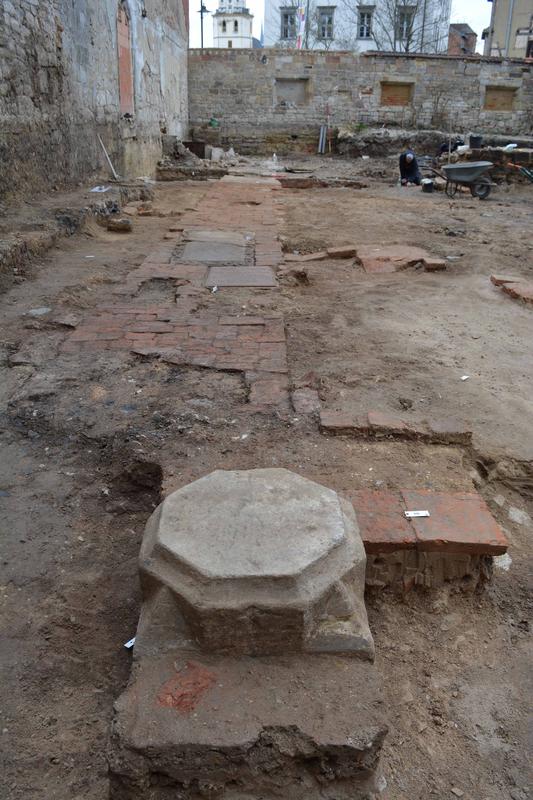Archaeological investigations in the area of the medieval Clarisse Monastery of St. Claren in Weißenfels, Saxony-Anhalt
The Burgenland district in Saxony-Anhalt is planning to build an educational campus in Weißenfels. The complex of buildings will also include the former monastery of St. Claren. In the run-up to the work on the education campus, the State Office for Heritage Management and Archaeology Saxony-Anhalt (LDA) has been carrying out archaeological investigations in the monastery since June 2022. In particular, the ongoing excavations in the area of the former church have already provided important insights into the history of construction and life in the monastery.
The Burgenland district in Saxony-Anhalt is planning to build an educational campus in Weißenfels. The complex of buildings will also include the former monastery of St. Claren. The Clarisse (Poor Clare) monastery was endowed in 1284 by Margrave Dietrich von Landsberg. Originally it was located just outside the town of Weißenfels and moved to its current location in 1301. After an eventful history, the late Gothic choir was relocated to the new cemetery as a chapel in 1882. The monastery buildings were used by the police until 1995. Only a part of the original monastery complex is preserved today.
In the run-up to the work on the education campus, the State Office for Heritage Management and Archaeology Saxony-Anhalt (LDA) has been carrying out archaeological investigations in the monastery since June 2022. The excavations are taking place both inside the building complex and outside. So far, test excavations have been carried out at various points in the basement; additional excavation areas were opened in the inner courtyard of the former cloister. The area of the former nave is currently being examined most intensively. Several burials were discovered here, some of which still have their grave slabs from the 15th to 18th centuries. In addition to burials, the main focus was on the relics of the various construction phases, which are marked by floors and column bases.
Historical texts show that the nuns moved into an existing building at the beginning of the 14th century and did not build a completely new monastery within a few years, as was assumed for a long time. The archaeological investigations carried out so far have provided indications for high quality and massive architecture – highlighting the importance of the area. As a result of the excavations, at least eight floors or walking horizons have already been identified within the nave, evidence for comparatively intense building activities.
The range of finds includes ceramics from the Middle Ages to modern times. The sherds mainly belong to domestic pottery. Less common, however, are lost finds within the nave. Smaller hairpins used to fix the hairstyle, buttons, eyelets, pendants in the shape of a cross appeared in high numbers. They were lost by people going to church and remained hidden in the cracks of the floor or under a possible floorboard.
The results of the archaeological excavations in the monastery of St. Claren in Weißenfels already paint a differentiated picture of the construction and history of use of this building complex that goes beyond the written sources. The findings expand the existing knowledge on the buildings and the history of Weißenfels.
Wissenschaftlicher Ansprechpartner:
Prof. Dr. Matthias Becker
oeffentlichkeitsarbeit@lda.stk.sachsen-anhalt.de
Die semantisch ähnlichsten Pressemitteilungen im idw



